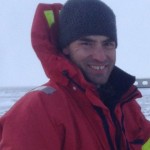The U.S. Department of Energy’s Office of Science has awarded two Office of Biological and Environmental Research (BER) grants for under-represented research within the Atmospheric System Research (ASR) program. The grants support the Atmospheric Radiation Measurement (ARM) Climate Research Facility’s recently established fixed site in the Azores, known as the Eastern North Atlantic (ENA), and the third and newest ARM Mobile Facility (AMF3) at Oliktok Point, Alaska. Two teams have been awarded funding opportunities to play leadership roles within the ASR community in developing emerging research strategies for these regions. Congratulations to Gijs de Boer, leader of the new Oliktok Point site science team, and Rob Wood, leader of the new ENA site science team.

Gijs de Boer is a scientist with the Cooperative Institute for Research in Environmental Sciences (CIRES), a joint institute between the University of Colorado, Boulder, and the National Oceanic and Atmospheric Administration (NOAA). His current research focus is on understanding lower atmospheric processes central to understanding the life cycle and climatic influence of Arctic clouds. De Boer is the lead principal investigator of the Evaluation of Routine Atmospheric Scientific Measurements using Unmanned Systems (ERASMUS) campaign, to be carried out at Oliktok Point in the coming months. This campaign serves two main purposes: to support the set of atmospheric measurements obtained concurrently by AMF3 at Oliktok Point with measurements from unmanned aircraft; and to evaluate the potential for future routine unmanned aircraft operations to gather atmospheric measurements at Oliktok. De Boer also serves as a co-leader for an ASR Cloud Life Cycle focus group studying the understanding of phase partitioning in clouds.

Rob Wood, University of Washington, is a long-time ARM user. He was the lead principal investigator for the 2-year Clouds, Aerosol, and Precipitation in the Marine Boundary Layer (CAP-MBL) field campaign on Graciosa Island in the Azores. Wood also used data from the AMF deployments to study processes controlling the radiative properties and microphysics of marine boundary layer clouds. He is currently co-chair of the ASR Cloud Aerosol Precipitation Interactions (CAPI) Working Group and serves on the ARM Science and Infrastructure Steering Committee and ARM User Executive Committee.
This work was supported by the U.S. Department of Energy’s Office of Science, through the Biological and Environmental Research program as part of the Atmospheric System Research program.

